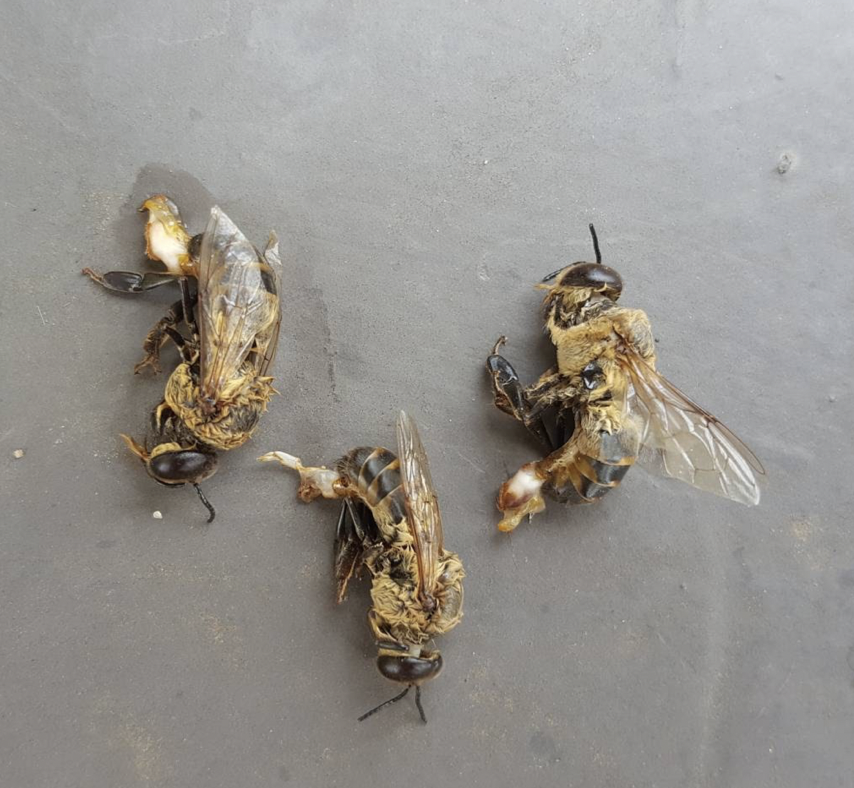The Birds and the Bees

Bee sex. It’s one of the most fascinating phenomenons in nature. A newly emerged virgin queen will leave her hive 5-7 days after she reaches the fully-formed adult stage in search of some strapping fellas, known as drone bees. Similarly, once a drone bee is sexually mature, which occurs about two weeks after he becomes an adult, his days are spent making daily flights to find a lady. Both queens and drones only have one job in the hive: reproduction.
Drone congregation areas (DCAs) are areas where these sexually mature drones gather to wait for virgin queens to arrive for mating. DCAs are 100-200 meters wide and 5-40 meters above the ground. The DCA may contain several hundred to several thousand anxiously awaiting drones. Only 0.5% of these drones will get the opportunity to mate with a queen.
Once a queen flies into the DCA, hundreds to thousands of drones will compete to mate with her, using their superior eyesight and their speed to chase after the queen. Once a drone reaches the queen, he mounts her from behind, inserting his endophallus–his penis–into the end of her abdomen. This romantic encounter lasts mere seconds. After ejaculation, he flips backwards off the queen, and his endophallus stays inserted into the queen, ripping through his abdomen and ultimately resulting in the untimely death of the drone. Beekeepers call these drones “popped drones” for good reason, as the act produces an audible popping noise. (Check out the picture above–those are three “popped” drones! You can see where their abdomens have exploded!) There is a small bulb on the end of the endophallus, which remains inside the queen’s abdomen, reflecting UV light which allows other drones to find her and perhaps also preventing semen from dripping out of her abdomen. When the next drone prepares to mount her, he will remove the endophallus remains from the last male bee. This practice will occur again and again over the course of a few mating flights and a few days. It’s critical for her colony (and her own survival!) that a queen has plenty of sperm in her abdomen to last several years of egg laying. Though scientific reports vary, some scientists report that queens may mate with up to 40 drones. Mating with drones from many colonies helps broaden her offspring’s genetic pool, and can help strengthen the hive’s ability to fight disease. After these early life mating flights, queens will never mate again. Once a queen runs out of sperm, her workers will replace her, balling around her to kill her, and in the meantime, raising a new queen from an egg. Check out the video below to watch a hive killing their queen!
Did bee sex get you jonesing to learn more about honey bees? Check out our beekeeping classes and hive tours in Austin or our online intro to beekeeping class!



Leave a Reply